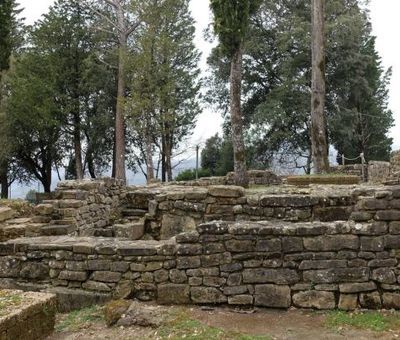Founded by the Etruscans, fortified by the Romans
The history and fortunes of Dicomano, a village straddling the Mugello and the Val di Sieve, have been shaped by the nexus of two vital rivers and their surrounding floodplains. Without question its origins are ancient - signs of a settlement date back to prehistoric times - but it was the Romans who turned it into a military base. Likely its name derives from Decumanus, the road that ran through the town from east to west, and ever since then its history has been defined by its roads and trade routes. It enjoyed great commercial and logistical cachet in the late medieval period.
The roads were controlled from here
The bulky square perimeter of an Etruscan building is probably the most important archaeological find to be seen in the archaeological site of Frascole. It was probably a fortified villa built to control the road from Casentino, which confirms that for centuries the area functioned mainly as a thoroughfare. The foundations of a Romanesque church, San Martino dal Poggio, were also dug up here, along with materials that date back between the sixth century BC to the first century AD.
There was a river port too
Though it seems impossible to imagine today, the Apennine stream of the Comano was once equipped with a river port. The documents are clear: between 1300 and 1700 a harbour stood on its banks, where wood was loaded and shipped downstream to the naval dockyards at Pisa and Livorno. What we know for certain, thanks to the research of Ilaria Becattini on the Opera di Santa Maria del Fiore museum, is that in 1431 the overseer of the Opera was tasked with designing the vie della Selva (woodways), which would take the wood through various waterways, including the port at Dicomano. Today the watercourse, which is divided into the stretches of Dicomano and San Godenzo, is a hotspot for canoeing enthusiasts.



